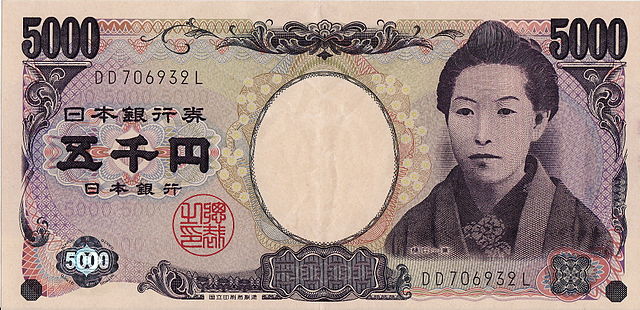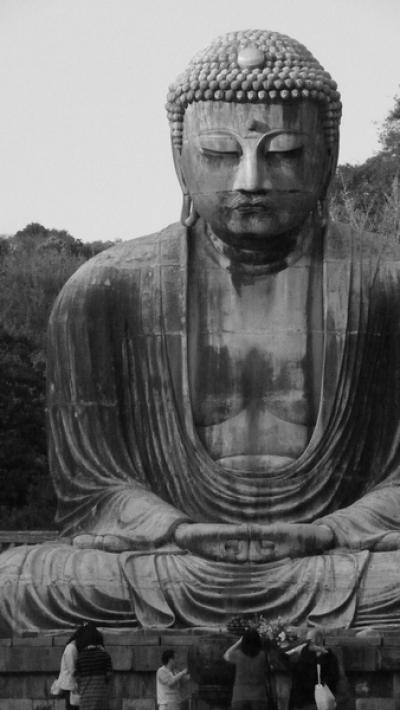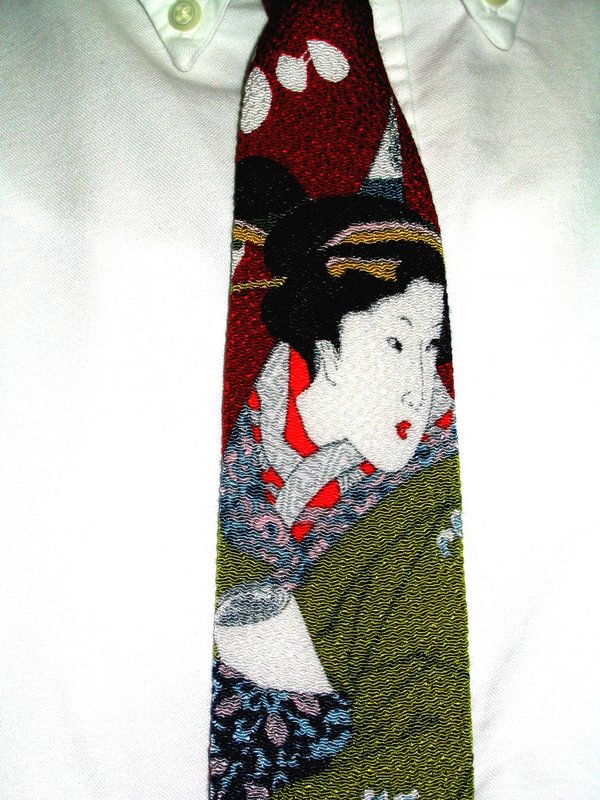The history of private travel & why the rich travel different!
How aristocratic lifestyles set the stage for today’s elite | lux lifestyles and the worlds of private travel.

This article looks at the “evolution” of private travel and private travel services. It is about travel and also, in part, about Japan, and how luxury and luxury travel is perceived there. In fact, Japan has it’s own “personal” history of private travel by elites and the wealthy that begins already in the Heian Period (794-1185), when Kyoto was the new capital of Japan (after Nara). During the Heian period the classes were ranked as follows, from top to bottom: the imperial family, the aristocrats, the Buddhist priests, the farmers, the craftworkers, and finally the merchants. From a Buddhist perspective business and money ranked at the bottom. In 1185 the samurai warrior class added to the class pyramid; they came in 4th, just after the priest class. And then in the mid to late 17th century, when Edo-Tokyo ruled Japan for nearly 300 years under generations of Tokugawa shoguns, the merchant class hit the big time. Much like the bourgeois of Europe started making big waves from the Renaissance onwards. [FYI: The Star Wars’ universal bad guy, Darth Vader, was based on the Tokugawa shoguns; with the Empire or the good guys far away on western edge of the shogun’s empire in Kyushu and SW Shikoku; the good guys overthrew the Japanese Darth Vader in 1867; there were pistol and sword fights all over Kyoto for while . . .]
OK! Let’s continue by getting a forest for the trees perspective of private travel, and then go from there. OK?
Did you know that less than 5% of international travelers use private travel services? Which means less than 5% of travelers regularly:
1. use custom-made itineraries and expert tour guides,
2. hire travel designers | experts,
3. stay in 4-5-star hotels,
4. use private jets (or First Class).
Most travelers, the other 95%, think they understand private travel, but they have been fooled to think that way. Most people understand private travel like icebergs: they understand the 5% sticking out of the water; the rest is not visible . . . And, as you will see below, the modern media industry has always obfuscated the realities of affluent life and private travel. Always! In fact, since the beginning of the Renaissance private travel has been kept a secret, much like Swiss banking or The City (of London) or the Vatican.
In 2024, international tourism receipts (i.e., the global travel industry) reached USD 1.5 trillion, making it a global top 10 industry. It is also the largest employer in the world! [roughly 1 in 10 people work in the tourism and hospitality industry]
At 5%, the private travel industry is worth a cool USD 75 billion/year or more . . .
As this article will show, private travel and therefore private advantage has always been the privilege of the few, the elites. In fact, the word privilege is almost the same as saying upper class. And the root of all this privilege is the explosive growth of cities, countries, empires, and commerce from the Renaissance onwards. Beginning in Florence in the 14th century. The Renaissance arrived in England in the early 16th century and peaked across Europe in 1650 (the next big boom would be the 1880s).
In Japan, the change also began around 1650 when the merchant class began to accumulate vast fortunes during the peaceful 265 years of the Edo shogunate. And fairly soon the samurai class lost its meaning (war), and their lucrative salaries from the shogun. The merchants were rich and low class. But when they intermarried with the increasingly insignificant and poor high-class samurai, a whole new era and class was borne.
Now let's get into the details of the who | when, what | where, and why | how of private travel & international lifestyles
Content by Ian Martin Ropke, owner of Your Japan Private Tours (est. 1990). I have been planning, designing, and making custom Japan private tours on all five Japanese islands since the early 1990s. I work closely with Japan private tour clients and have worked for all kinds of families, companies, and individuals since 1990. Clients find me mostly via organic search, and I advertise my custom Japan private tours & travel services on www.japan-guide.com, which has the best all-Japan English content & maps in Japan! If you are going to Japan and you understand the advantages of private travel, consider my services for your next trip. And thank you for reading my content. I, Ian Martin Ropke (unique on Google Search), am also a serious nonfiction and fiction writer, a startup founder (NexussPlus.com), and a spiritual wood sculptor. Learn more!
The Who & When of Early Private Travel

Who: Private travel got going in the Renaissance when old money aristocrats learned how to stay rich with new finance ideas and trade over agriculture and land income. These people, the rich landowners who figured out "the city" (while their once-rich aristocratic friends’ fortunes dwindled) invented a new and extremely lucrative world of finance, travel, and trade . . .
When: Private travel as we know it began during the European Renaissance period (1350-1650). Europe and the New World (said to have bankrolled uninterrupted consumption worldwide from 1500) changed enormously in these 350 years.
It’s important to remember that Europe was extremely polluted and deforested when Christopher Columbus arrived in the New World. With a return to the classic views of Rome, Europe revitalized itself during the Renaissance and left the Dark Ages behind. The changes, including new banking innovations from Florence to Amsterdam, fed by the massive amounts of gold and silver arriving from the New World, gave us the foundation for the industrialization period of Europe.
There were actually two industrialization periods: one for Britain and one for Europe, North America and Japan. The first Industrial Revolution lasted 1750 to circa 1830 and was mostly a British event. The second Industrial Revolution began in the 1860s and lasted until the early 20th century, and spanned continental Europe, North America, and Japan.
In the 1880s, steel, railways, new electronic communication technologies, chemicals, and medical innovations formed a perfect boom. A boom period when the old still-rich classes and the new rich began to move across the face of the earth in very new and luxurious ways.
You could say the first members of the jet set were those who cruised across the seas on revolutionary ocean liners that stopped in the UK, US (both coasts), Hawaii, Hong Kong and old Bombay . . . and on fancy trains that included dining and nice sleeping cars . . .
And by the 1950s AMEX had offices across the planet, lots of them; and these offices weren't just for getting cash with AMEX travelers cheques: If you were sufficient affluent, AMEX also offered private services for travel, real estate, facilitation and banking.
What & Where: What is private travel and where did it begin?

What: What services evolved to cater to this new era of elite travelers? These 9 keywords cover everything (then and now): local, international, transportation, accommodation, banking, dining & shopping, communications, travel services (guides, tours), and miscellaneous services (couriers, liaising, other facilitation).
All of these services were in play from the Renaissance onward and eventually became key understandings in the 20th century. For example, transportation from 1400 to 1850 was by horse, or horse & carriage. Then the train and then air travel.
Same thing for banking. In 1400 finance offered certain “players” new ways to get money and thus make money. Traders were the first to see this need: that credit from new banking institutions, the first really, could make cross border payment safe and most importantly convenient. The first clients of the new finance bros of the late 14th century could go to a banking institution in Verona, either give it cash or gold or receive cash or gold for a trade deal in Brussels. Easy. Suddenly, money moved from A to B to pay for what was being traded between businesspeople in A and B. Take the entire English alphabet and A-Z and all that trade and you have the birth of modern banking. Today, when we travel, finance is an afterthought because we have digital finance in real time. People talk about cashless societies with dread but isn’t 21st century personal and business banking and getting money a digital process. Pretty much 90% of travel finance is digital! In North America it is possible to go anywhere and do anything with a credit or debit card!
Now let’s skip forward from the Renaissance period to the middle of the 19th century. From say 1850 England, Scotland, and Germany and others went crazy for science. Everything from chemistry and chemicals to steam and railways. This is when private travel really took off. Because the late 19th century and early 20th century was a population explosion. And private travel began to fade into the fog while average affluent folk could take the train from Calais to Paris . . . and onward . . .
The birth of high-end private travel from the 1880s onwards was carefully covered by the earliest media empires. And all these media empires were owned and run by the very people who defined modern luxury travel: the new rich, the bourgeoise (because their numbers were much higher than still-rich aristocrats, much higher). In fact, the modern media was a new class. Few farmers or aristos understood the power of the printed word. Easy consumption of paperbacks was just getting started. The new Media Industry players competed across Europe and North America to inform people, educate people, and convey messages from the wealthy and powerful to the masses (and other wealthy & powerful players). Think of the media as the scribe in the Senate when Julius Ceasar was killed. That scribe knew a lot because he transcribed, heard, and remembered a lot about what the senators said, argued about, and decided. And also, their vices and material circumstances. Great Roman scribes became the first press barons. In a media world peppered with history: Reuters, 19th century; newspaper barons; yellow journalism and the evolving lifestyles of the rich. From the Grand Tour by train across Europe to island and nation hopping on ocean cruisers of London docking in Singapore, Tahiti, Hong Kong, and Honolulu . . .
And all existing media organizations were private and interested in covering the travel lifestyles of the rich & famous. And this content was written in such a way that those lower on the economic ladder also desired the wonderous pleasures of international travel . . . And yet the very secrets of the private travel world remained secret, elusive, or just not published (then and today; see below).
Where: By the 1950s any well-off American could go on their own Grand Tour of the Continent and even slum it a little in North Africa . . . And by the late 1970s Southeast Asia joined the destination list . . . Today, its the entire world in terms of possibility but probability still favors Europe, North America, and, for many, Southeast Asia . . .
Why private travel & how did private travel evolve?

Why? Why did private travel become so glamorous and desirable? Good question. The answers would fall into these 3 categories: 1. The advantage of getting away from stress, ignorance, and repetitiveness of "home" in all ways (any yet still able to remain in contact with "home" by snail mail, telegram and telegraph). 2. Because travel, leisure travel, is the most exclusive and expensive way to "relax," making it thus very "bling worthy" in the media. 3. And because newspapers and magazines covered the lifestyles of the rich & famous.
Travel is a unique “commodity” or a unique experience, especially when one travels beyond their own at-home local culture to another cultural mindset (regional, national, or international). This is where travel becomes adventure, serendipity, seduction, and massively educational. When we are in an international destination we automatically compare and contrast our at-home culture with the one around us. As a Canadian raised by German-born parents, I reach the age of majority and then ping ponged between the advantages of Europe and Canada for a few years. Finally, I chose everywhere but Canada and became an annual visitor in my home country from the age of 30. I’ve been comparing and contrasting cultures and societies ever since!
Travel is also to walk out the front door and walk randomly or following natural paths for half an hour or an entire day. This is also travel. Some people never leave their home state but travel every day or weekly in amazing ways. So, we can say that travel is often automatically connected with distant places. This is a linguistic bias but it’s also true. When I go on a trip it’s international most of the time. Otherwise, it’s what I did over the weekend or last week in my home country . . . You too, no?
Travel at its core is experiential. New trees, new food dishes and beverages, new vistas, new fragrances, new colors . . . And these experiences are gained through what travel is. Travel is putting you in foreign or other cultural destination X by airplane, pretty much 100% these days. Once you land in X you either go from the airport to your hotel in a car | taxi or via limo bus or other inexpensive option. Once you get to your hotel you start eating, strolling, and flooding your senses with new experiences that are stimulating and, for you, priceless.
Travel is irreplaceable in the human world, now and 50 years ago. And it’s easy to sell because it caters to all appetites and budgets. But private travel, as ever, remains elusive and mostly described in expensive magazines and through jet-setting stories in big newspapers. Luxury lifestyle stories that make everyone covet as much of those lifestyles as they can. As much of what we know about those lives. Usually broken down into three classic cliches: private jets, exclusive historical hotels & resorts, finer than fine food.
We have digressed here a bit. Let’s return to the evolution of private travel from the 1950s onward. And let’s also add the key word, communications, to the travel keyword mix. Given the final paragraphs above, we can see the close relationship between affluence, private travel, and technology when we discuss private services of any kind. So, in a way, private travel or private banking is none of our business! It’s a lifestyle option like a clothing courtier or tailor was in the 18th century. A lifestyle option available and understood by the upper classes. If you weren’t upper class then you knew what your heard and read in your newspaper, and nothing more. Private means NONE OF YOUR BUSINESS! And fair enough when you are worth a fortune or are particularly important or powerful. Private means secure and securable. Full stop!
Here is a short list of communication advances from 8000 BC to the iPhone: Human messengers (8000 BC) >>> Horse messengers (2000 BC) >>> Pigeons (500 BC) >>> Gutenberg’s printing press startup launches (1444) >>> Stagecoach networks for passengers, freight and documents (1610; UK) >>> the first travel guides for individual travelers (1830s; UK)>>> Telegraph (1840s; US) >>> The post | snail mail (1850s; Europe) >>> Telephone (1880s; Canada) >>> Telegram & ticket tapes (1890s; US) >>> AMEX worldwide travel and service offices (1950s; US) >>> FEDEX (1970s) >>> Blackberry (1995; peaked at 80 million subscribers in 2012; Canada) >>> Email (late 1990s) >>> iPhone (2007; has over 1.5 billion users in 2023; 18X Blackberry peak) . . .
The first newspapers (gazettes, actually) appeared in the mid 16th century in Florence, the center of the Renaissance (where the old rich nobility figured out how to get richer; while the noble losers went extinct, almost). And before long Europe was full of these handwritten newsletters used to transmit political, military, and economic news.
Gazettes printed on a printing press began to eclipse the handwritten gazettes in Germany around 1600, and quickly spread across France and England. With industrialization Europe became flooded with the newspaper format (we know today) in 1860s and 1870s.
Lucrative niches continue to exist for newspapers (the Wall Street journal; the Information; the Financial Times) and online “not cheap” sources like Bloomberg News. People pay for special kinds of information and access to that information. [Disclosure: I pay MIT, Bloomberg News, the Harvard Business Review to access their information; and the New York Times too.]
And let’s not forget the electronic advances in communication tech: the telegraph in 1837; radio in the 1920s; TV in the 1950s; and the internet in the 1990s.
If you enter private travel into Google Search you are presented with the same things over and over. Private jets & luxury hotels. As if private travel or private services (a better word because it’s even more opaque than private travel) was exclusively linked to the most expensive things: things well beyond the average traveler, way beyond, really.
This is both accidental and intentional. The search combinations private + travel or private + luxury yield results connected to lifestyles that most of us only understand from movies. If only a few percent of the population are using private travel or private jet options, it’s not surprising that we know nothing about these lifestyles. And the rich like to keep it that way. They want to brag, at least the nouveau riche does, but they also want to keep as much from you as they can. Afterall, they don’t want you to understand them better. They want you to be envious and enthralled by their status, but they don’t need to tell you anything else! Why? Because 95% of the global population simply can not afford these services.

To bring this essay to a close, let’s look at the very origins of travel. Why? To understand what I call the entire “travel tree.” I have long sketched plants and trees with roots, a trunk, and branches and leaves. And the travel tree is nothing more than everything to do with travel, international services and more than a few other things related to private “foreign relations.” And NexussPlus, believe it or not, provides nearly all the services on the 21st century travel tree. As you will see, so-called international lifestyle concierges are not much more than a tiny branch on the much larger private travel branch.
The earliest roots of travel are trade and religion. Let’s say the entire global travel industry can be represented by a giant tree. The roots of the tree are trade and religion. The trunk of the tree represents the 9 travel keywords, the very pillar of what travel became from the Renaissance onward. And all the big and smaller branches on the travel tree represent the many specializations found today in travel and tourism.
The big branches at the top of the tree are, by definition, the newest trends in travel: Expedia | Booking | Trip Advisor | AirBnB, VRBO, etc. And these branches don’t really cater to the private travel crowd (the upper 10-20% of any nation on the planet or the Upper Middle Class). In fact, most of the growth at the top of the travel tree is about the average travel consumer. The private travel-related branches are very small but also very lucrative. And they continue to remain off the radar of most travelers. Because luxury keep people away (can’t afford it) and because the private travel industry likes to remain in the half-light (just enough exposure to get the middle class to crave versions of what the private travel crowd take for granted).
The travel tree at the very top has new twigs (yes, twigs) that we call Lifestyle Management or Luxury Lifestyle Concierges (80% of which are based in the City of London). Even international real estate management is a small branch at best but also an old branch (since the 1950s at least!).
To really understand private travel and the upper-middle-class (UMC) crowd, you must consider the preferences and aesthetics of individuals or families, affluent individuals and families. These people hire guides when they travel. These people book private vehicles + drivers, wherever they go. These people pay for information and services to save time and have a better time whilst traveling. And the word personal aesthetics covers all these choices.
Therefore, to understand private travel is to understand the importance of aesthetics in daily life and in travel life and in your personal life. Affluent people have many aesthetic preferences. Some like to sleep in rustic hotels or inns. Consider that the Rolling Stones frequently hung out on the beach in Mustique in the Caribbean in super rustic beach houses made of driftwood with little metal or glass in sight! Celebrities are frequently tagged for the places they go and things they do there. Every celebrity is different from an aesthetic perspective. So am I!
I am not affluent (and may never become affluent; I’m 64 as of this writing) but when I travel everything is related to aesthetics. Everything! I like wood and glass, not metal and glass. I like patina over brand new. I like textiles and ceramics. And all these preferences, my preferences, decide where I go, what I do there, and how I live my day in far flung locations. And you fellow readers are no different.
So, the next time you travel abroad consider that a bit of private travel expenditure is worth every penny. And never forget that the world of private travel is private and only affordable for say 10-20% of the population. But there is not need for us to adulate the 10-20%. Learn from what affluent people do with their time and money and see how you can do the same with your time and money. OK? Learn more!
- Indexed full list of all my blog posts | articles.
- Indexed full list of all my Japanese culture essays.
Content by Ian Martin Ropke, owner of Your Japan Private Tours (est. 1990). I have been planning, designing, and making custom Japan private tours on all five Japanese islands since the early 1990s. I work closely with Japan private tour clients and have worked for all kinds of families, companies, and individuals since 1990. Clients find me mostly via organic search, and I advertise my custom Japan private tours & travel services on www.japan-guide.com, which has the best all-Japan English content & maps in Japan! If you are going to Japan and you understand the advantages of private travel, consider my services for your next trip. And thank you for reading my content. I, Ian Martin Ropke (unique on Google Search), am also a serious nonfiction and fiction writer, a startup founder (NexussPlus.com), and a spiritual wood sculptor. Learn more!